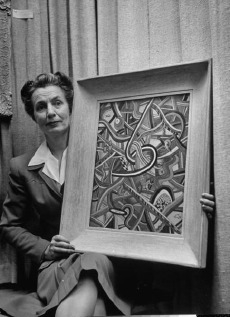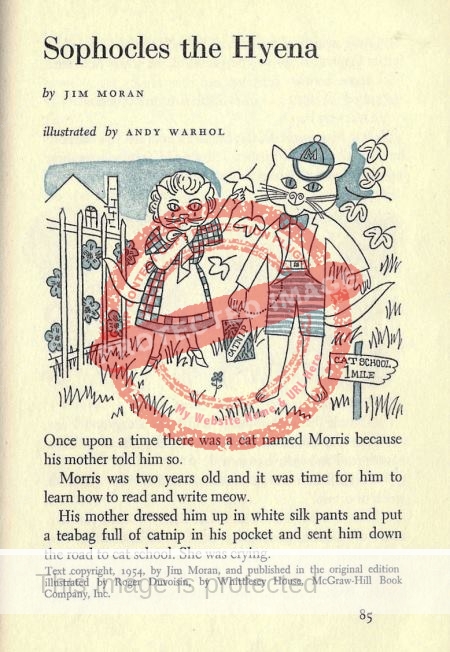Ajijic has certainly attracted more than its fair share of strange and colorful characters over the years but perhaps nobody with quite so many true tales to spin as serial prankster Jim Moran.
By the time Moran “retired” to Ajijic, he was almost 80 years old and had put his pranks behind him. Tall, rotund, with a flowing white beard and a deliberate walk, he focused on his photography, art, writing and classical guitar playing.
James Sterling Moran (1908-1999) was born into an Irish-American family in Woodstock, Virginia, on 1 January 1908 and became one of American’s most original publicists and press agents, pulling one stunt after another to boost the products, services or politicians he sought to promote. In 1989, Time called him, “the supreme master of that most singular marketing device–the publicity stunt.”
Moran never attended college but gained his education from the university of life. He had a wide variety of jobs from tour guide to airline executive and radio studio manager.
Several books have been written about Moran and his many outrageous publicity stunts. His good friend, humorist H. Allen Smith wrote about Moran in Lost in the Horse Latitudes (1944) and The Compleat Practical Joker (1953).
In chronological order, Moran’s most noteworthy pranks, usually based on acting out old sayings, included selling a refrigerator to an Inuit in Alaska on behalf of General Electric (1938); spending 10 days to find a needle in a haystack to promote a real estate development (1939); leading a bull through a china shop on 5th Avenue in New York City (1940); changing horses mid-stream in the Truckee River, Nevada, during the 1944 US Presidential election; sitting on an ostrich egg for 19 days until it hatched to promote the film The Egg and I (1946); driving through Manhattan in a taxi adapted so that it appeared to be driven by a chimpanzee to publicize a Broadway show, Fanny (1954); opening an embassy in Washington D.C. for the fictitious country of Grand Duchy of Fenwick to advertise The Mouse That Roared (1959).
Moran also advanced some highly original ideas that might have revolutionized technology as we know it. For example, in 1941, he promoted an energy-saving system whereby only skinny people would be permitted on ‘Up’ escalators, and only fat people on ‘Down’ escalators. According to the prankster, that would generate some surplus energy, sufficient “to take care of everybody’s lights.”
His best-known outright hoax was to paint an abstract, “the worst thing I could think of”, and get a friend to submit it in November 1946 to the Los Angeles Art Association as the work of a previously-unknown artist, “Naromji”. The work, entitled “Three out of Five”, was accepted for an exhibition of abstract art. The Association gave it a price tag of $1,000 and hung it alongside works by such recognized artists as Helen Lundeberg and Stanton MacDonald-Wright.

Woman holding Naromji’s “Three out of Five”. (Life archive)
The Los Angeles Times described it as “an astonishing conglomeration of paint, chalk, magazine cut-outs and carmine fingernail polish.” At the end of the month, Moran stepped up to claim authorship, pointing out that Naromji was Moran spelled backwards, with a ‘ji’ added for confusion and that “Three out of Five” was the name of a hair restorer, since abstract painting made him want to tear out his hair.
Moran’s artistic hoax as Naromji is reminiscent of the literary hoax carried out many years earlier by two American poets connected to Lake Chapala: Witter Bynner and his close friend Arthur Davison Ficke. Bynner first visited Chapala in the company of D. H. Lawrence in 1923 and later bought a house in the town. Ficke visited his friend in 1934-35 and set his novel Mrs Morton of Mexico (1939) in Chapala. In 1916, the two men perpetrated what has often been called “the literary hoax of the twentieth century” when they published a joint work, Spectra: A Book of Poetic Experiments, purportedly written by Anne Knish (Ficke) and Emanuel Morgan (Bynner). Intended as a satire on modern poetry, the work was enthusiastically reviewed as a serious contribution to poetry, before the deception was revealed in 1918.
Jim Moran was frequently on TV and had parts in several films, including The Body Snatcher (1945), Specter of the Rose (1946), The Mask (1961) and Is There Sex After Death? (1971).

Jim Moran. Sophocles the Hyena. Illustrated by Andy Warhol.
Moran’s books include Sophocles, the Hyena: a fable (1954). This was originally illustrated by Roger Duvoisin, but a later version, in the “Best In Children’s Books” series published by Nelson Doubleday, became much more famous because it featured illustrations by Andy Warhol. Moran also wrote Why Men Shouldn’t Marry (1969); How I became an authority on Sex (1973) and The Wonders of Magic Squares (1982). As a photographer, Moran’s book The Classic Woman was first published in 1966 by Playboy Press.
In Ajijic, the multi-talented and highly imaginative Moran was known as a writer, artist and photographer, as well as a skilled classical guitar player.
In 1986, the Galeria Gentes (Independencia #5, Ajijic), run by master lithographer Bill Gentes, held a one-person exhibit of Moran’s artwork. The show was comprised of about 100 works by “Naromji”. A contemporary reviewer found that
“His use of brilliant color gives the works an alluring touch. His birds and other serious subjects are strikingly beautiful, while most of the rest convey something of the cosmic giggle to be expected from Jim Moran the prankster.” (El Ojo del Lago, March 1986.)
Ajijic watercolorist Enrique Velázquez remembers Jim Moran with great affection. He recalls Moran as having lived in Ajijic for several years from the mid-1980s into the 1990s. Moran, then in his late 70s, had a much younger wife, who had been a medical student in Guadalajara. He had a long, white beard and a distinctive way of walking, very deliberate with his hands clasped behind his back. Velázquez prepared a series of beautiful illustrations for a children’s book by Moran entitled Linda and the Magic Dream Bubble, though this was apparently never published.
Jim Moran, who married several times but had no children, died in Englewood, New Jersey, at the age of 91 on 18 October 1999.
Acknowledgment
- My sincere thanks to Ajijic watercolorist Enrique Velasquez for first bringing Jim Moran’s artistic side to my attention.
Sources
- Anon. 1986. “Portrait of the Artist” (Jim Moran). El Ojo del Lago, March 1986.
- Ezra Goodman. “High Priest of Hoopla.” The New York Times, 14 December 1947.
- Travis Hoke. 1947. “Screwball Moran takes up modern art.” The American Weekly, 20 April 1947.
- Los Angeles Times. 1946. “Gagster’s masterpiece hung as authentic art.” Los Angeles Times, 30 Nov 1946;
- Douglas Martin. 1999. “James S. Moran Dies at 91; Master of the Publicity Stunt” (Obituary), New York Times, 24 October 1999.
- The Pantagraph (Bloomington, Illinois), 16 Jan 1941, 1.
- Christopher Reed. 1999. “Jim Moran” (obituary), The Guardian, 1 December 1999.
- Washington Post. 1999. “Publicity Stuntman Jim Moran Dies at 91” (obituary). The Washington Post, 20 October 1999.
Comments, corrections or additional material related to any of the writers and artists featured in our series of mini-bios are welcomed. Please use the comments feature at the bottom of individual posts, or email us.
Tony Burton’s books include “Lake Chapala: A Postcard History” (2022), “Foreign Footprints in Ajijic” (2022), “If Walls Could Talk: Chapala’s historic buildings and their former occupants” (2020), (available in translation as “Si Las Paredes Hablaran”), “Mexican Kaleidoscope” (2016), and “Lake Chapala Through the Ages” (2008).